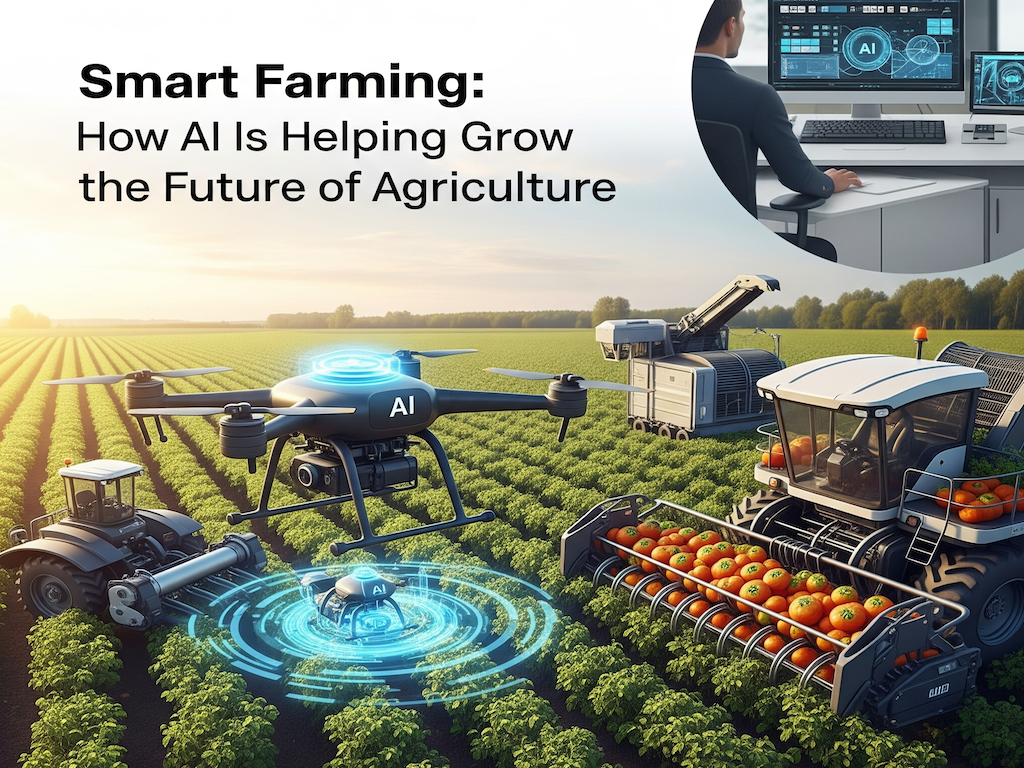
Smart Farming: How AI Is Helping Grow the Future of Agriculture
Farming has always relied on the expertise of those who work the land—knowledge passed down through generations, sharpened by experience, and guided by a deep connection to nature. But today, farmers are being asked to produce more food with fewer resources, in the face of changing weather patterns and growing global demand. Technology, especially artificial intelligence (AI), is beginning to play a role in helping farmers meet these challenges—not by replacing their wisdom, but by strengthening it.
What Makes a Farm ‘Smart’?
A smart farm uses digital tools to monitor growing conditions in real time. This might include sensors in the soil that track moisture levels, or cameras that watch how plants are growing. These tools send a constant stream of information, and AI helps make sense of it—identifying patterns, detecting problems early, and even automating certain actions. Farmers still make the final call, but they now have access to detailed insights that can support better decisions and save valuable time.
AI as a Partner, Not a Replacement
One of the biggest misconceptions about AI in farming is that it takes control away from people. In reality, AI serves as an assistant—one that never sleeps and can process more data than any person could reasonably handle. For example, if a crop starts showing signs of stress, AI might pick up on subtle changes in color or growth before the human eye can. The farmer, with their trained experience, decides what to do next. It’s not about replacing human judgment, but enhancing it.
Rethinking How and Where We Grow
Smart farms aren’t limited to rural fields. More farmers are turning to greenhouses and indoor systems that use methods like hydroponics, where plants grow in nutrient-rich water instead of soil. These setups can be highly efficient and work in places where traditional farming is difficult. With AI helping to manage light, temperature, and nutrients, these farms can grow food year-round while using less water and land.
Supporting Decisions With Data
Experienced farmers already understand their land and their crops in ways that technology can't replicate. What AI offers is the ability to process large volumes of information—from satellite weather data to years of crop yields—and turn it into clear recommendations. When should you plant this season? Should you adjust irrigation in one corner of the field? AI can help answer these questions by bringing together data that would otherwise take days or weeks to analyze manually.
Respecting the Knowledge on the Ground
It’s important to recognize that smart farming tools are most powerful when they work alongside experienced farmers. AI may suggest a watering schedule, but it’s the farmer who knows how a specific crop reacts in a dry spell, or how a sudden shift in temperature might play out in their unique environment. The future of agriculture depends on a partnership between new tools and time-tested knowledge—technology helping people, not replacing them.
A Smarter Way to Grow
Smart farming shows us what’s possible when innovation meets tradition. With AI and other technologies, farmers gain new ways to protect their crops, reduce waste, and adapt to the challenges of a changing world. But at the heart of it all remains the same truth: farming is a human endeavor, built on skill, care, and an enduring connection to the land.
